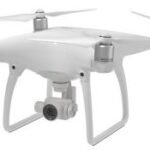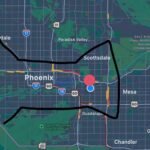Introduction to Drone Altitude Restrictions
As drones have become more popular among both hobbyists and professionals, understanding the altitude restrictions related to drone flight has never been more crucial. These regulations help ensure the safety of not only the drone operators but also other airspace users and the communities underneath. So, let’s dive deep into the importance of knowing these regulations and the common altitude restrictions you might encounter.
Importance of Understanding Regulations
Imagine you’re out flying your drone, capturing breathtaking aerial shots of a sunset over the beach. You’re having a great time, but then suddenly you hear the buzz of a helicopter above you. This scenario highlights the importance of understanding drone altitude restrictions. Remember, violations can lead to serious consequences, such as:
- Safety hazards: Flying too high can bring your drone dangerously close to manned aircraft, leading to potential collisions.
- Legal issues: Failing to adhere to altitude limits may result in fines or other penalties from aviation authorities.
- Insurance complications: If an accident occurs while you’re out of compliance, your insurance may not cover the damages.
Understanding these regulations is not just a matter of following the letter of the law; it’s about being a responsible participant in the growing airspace community. Nearly every country has its own set of regulations regarding drone flight, so if you’re planning to fly, make sure you are informed about the rules governing your region. Take time to read through the guidelines laid out by your local aviation authority. Consider joining a drone community or forum to keep up with the latest news and experiences shared by fellow drone enthusiasts.
Common Altitude Restrictions
Now that we’ve established the importance of understanding drone regulations, let’s break down some of the common altitude restrictions you might encounter. Generally, these restrictions can vary by country, but there are some common threads among them.
- Standard Altitude Limits:
- In the United States, the Federal Aviation Administration (FAA) sets a general altitude limit of 400 feet above ground level for recreational drone users.
- In many European countries under European Aviation Safety Agency (EASA) guidelines, the altitude limit is generally similar, often around 120 meters (approximately 394 feet).
- Restricted Airspace:
- Certain areas, such as near airports or military installations, come with lower altitude ceilings or may require special permissions to fly at all. If you haven’t checked a drone map beforehand, you may be about to fly into a no-fly zone!
- Always stay informed and avoid these areas unless you have specific clearance.
- No-Fly Zones:
- National parks and other protected areas often ban drone flight altogether or impose strict altitude limits.
- Examples include iconic sites like Yosemite or the Grand Canyon, where the serenity of nature can be disturbed by drone noise and presence.
- Weather and Environmental Considerations:
- Weather conditions can also impose altitude restrictions. For example, flying in high wind or poor visibility situations often necessitates flying at lower altitudes to maintain control.
Here’s a quick reference table summarizing some common altitude restrictions:
| Region | Altitude Limit | Notes |
|---|---|---|
| United States (FAA) | 400 feet AGL | General limit for recreational users |
| Europe (EASA) | 120 meters (394 feet) | Common limit for both recreational and commercial uses |
| Near Airports | Varies (often ≤ 400 feet) | Requires special permissions |
| National Parks | Varies (often 0 feet) | May be completely off-limits for drone usage |
By keeping these common altitude restrictions in mind, you can enjoy flying your drone while also respecting the safety and regulations set for everyone involved. Always prepare adequately before heading out and remember that knowledge is your ally in becoming a responsible drone pilot. Stay tuned as we delve deeper into specific regulations set by civil aviation authorities in the next section!
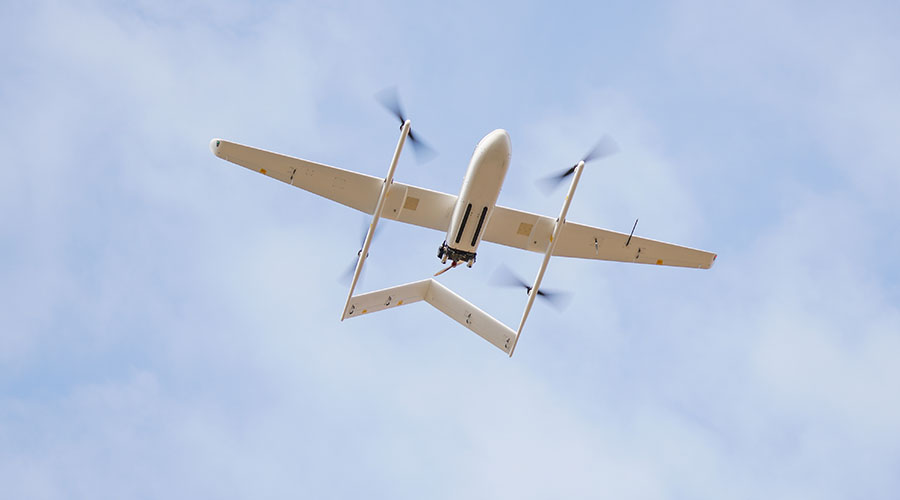
Civil Aviation Authority Guidelines
Having explored the importance of altitude restrictions and what they typically are, it’s time to familiarize yourself with the specific guidelines set by civil aviation authorities. Aviation regulations can be a bit overwhelming, but they are essential to ensure safety in the sky. Let’s break down the relevant regulations from two major entities: the Federal Aviation Administration (FAA) in the United States and the European Aviation Safety Agency (EASA) in Europe.
Federal Aviation Administration (FAA) Regulations
The FAA plays a crucial role in regulating airspace and managing drone operations in the United States. Their guidelines are designed to facilitate safe drone flight while promoting innovation within the industry. Here are some key FAA regulations that every drone operator should know:
- Altitude Limits:
- As mentioned before, the maximum altitude for recreational drone use is 400 feet above ground level (AGL).
- For commercial drone operators, the altitude ceiling remains the same, but with added requirements for obtaining a Remote Pilot Certificate.
- Airspace Classes:
- The FAA divides the airspace into different classes (Class A, B, C, etc.), each with its own regulations.
- For example, if you plan to fly in controlled airspace, you generally need to request authorization before taking off.
- Visual Line of Sight (VLOS):
- Drones must be operated within the operator’s visual line of sight. This means no fancy FPV goggles while flying; you have to keep your eyes on your drone!
- Notifying Nearby Air Traffic:
- If you’re flying your drone in a more populated area, it’s good practice (and often required) to notify nearby air traffic and possibly get permission.
- Registration:
- Drones weighing over 0.55 pounds (250 grams) need to be registered with the FAA, and that includes providing identification numbers on your drone.
A personal anecdote – the first time I flew my drone, I was overwhelmed by how much I needed to know. I spent hours going through FAA guidelines. It’s time well spent, as it not only helps you stay compliant but also makes for a safer experience.
European Aviation Safety Agency (EASA) Guidelines
If you’re based in Europe or looking to fly your drone there, you’ll want to be familiar with EASA regulations. EASA has a more unified approach to drone regulations across its member states, which makes it easier for operators to navigate. Key EASA guidelines include:
- Categories of Operations:
- EASA classifies drone operations into three categories – Open, Specific, and Certified – based on the risk involved.
- Most recreational flyers will fall under the Open Category, which is subject to the least stringent requirements but still mandates compliance with altitude limits (typically 120 meters).
- Altitude Restrictions:
- The standard altitude limit in the Open Category is 120 meters (394 feet) AGL.
- Some specific areas may impose lower altitude limits, especially near airports or populated zones.
- Pilot Competency:
- Drone operators in Europe need to complete online training and pass an exam for the Open Category.
- In the Specific Category, further assessments are necessary, often requiring operational authorizations from authorities.
- Notifying Air Traffic Control:
- Similar to FAA regulations, if you’re planning to operate in specific airspace, you may need to notify the appropriate ATC (Air Traffic Control).
- Registration:
- All drones over 250 grams must be registered, and the operator needs to have an identification number listed on their aircraft.
Here’s a quick comparison table summarizing the key guidelines between the FAA and EASA:
| Aspect | FAA (U.S.A) | EASA (Europe) |
|---|---|---|
| Maximum Altitude | 400 feet AGL | 120 meters (394 feet) AGL |
| Categories of Operation | Not specified, but follows VLOS | Open, Specific, Certified |
| Registration | Required for drones > 0.55 lbs | Required for drones > 250 grams |
| Pilot Training | Not required for recreational | Required for Open Category and Specific |
| Air Traffic Communication | Necessary in controlled airspace | Required in specific areas |
By understanding these FAA and EASA guidelines, you can elevate your flying experience while ensuring you follow the rules of the sky. Keep these considerations at the forefront as we explore the safety implications of violating altitude restrictions in the next section!
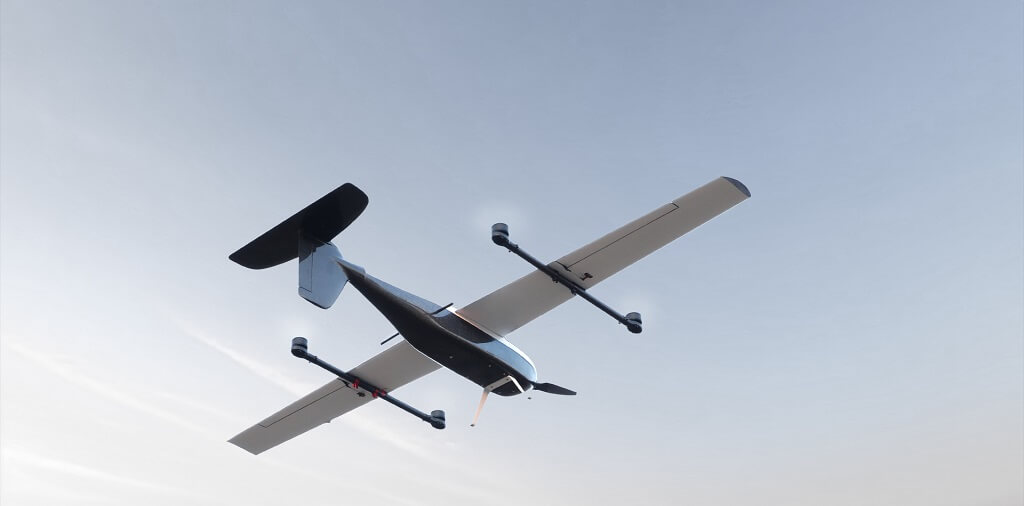
Safety Implications of Violating Altitude Restrictions
Having covered the civil aviation guidelines from the FAA and EASA, it’s essential to discuss the safety implications that arise when these altitude restrictions are violated. While flying drones can be an exhilarating experience, disregarding safety regulations can have severe consequences—not only for you but for others in the air and on the ground. Let’s explore the risks posed to manned aircraft and the potential dangers to infrastructure that arise from violating altitude limits.
Risks Posed to Manned Aircraft
One of the most critical safety concerns when flying drones is the risk they pose to manned aircraft. The number of drones in the sky is increasing, and the potential for dangerous interactions grows as well. Here are some of the risks associated with violating altitude restrictions:
- Collision Risks:
- Drones operating above the permissible altitude can find themselves in the path of commercial jets, helicopters, or even small private planes.
- A collision, even with a relatively small drone, can result in catastrophic damage to the aircraft, putting passengers at risk.
- Increased Air Traffic Control Burden:
- When drone pilots operate without regard for altitude regulations, it adds complications to air traffic control.
- Controllers may need to issue emergency instructions to pilots flying manned aircraft, diverting their attention and heightening stress levels.
- Incident Examples:
- There have been documented cases where drones were spotted dangerously close to commercial airliners during landing and takeoff phases. Incidents like these underscore the gravity of the situation.
- A notable case in 2019 involved a drone being spotted at 2,000 feet near the approach path of a major airport, raising alarms and prompting investigations.
- Pilot Uncertainty:
- The presence of drones in unregulated altitudes can create confusion and uncertainty for pilots of manned aircraft. They must remain vigilant for potential hazards that may not have been there before.
As a personal reflection, I remember attending a local drone event where a seasoned pilot recounted a close call he had while flying in an airspace he shouldn’t have been. It was a sobering moment that drove home the importance of altitude awareness—not just for personal safety but for the greater airspace community.
Potential Dangers to Infrastructure
Aside from the risks to manned aircraft, violating altitude restrictions can present significant dangers to infrastructure as well. This includes everything from power lines to communication towers and even emergency response operations.
- Interference with Emergency Services:
- Drones flying in restricted airspace can disrupt firefighting efforts, search and rescue missions, and air ambulance operations. For example, if a drone is flying too high near a firefighting air tanker, it can impede the critical operations required to control an emergency situation.
- Damage to Critical Infrastructure:
- Drones that operate out of their designated altitude limits pose risks to structures like transmission towers, bridges, and tall buildings.
- If a drone collides with any of these, it could lead to outages (like power loss) or cause damage requiring costly repairs.
- Privacy Invasion:
- High-flying drones can inadvertently infringe on the privacy of individuals, particularly if they capture images or video of private properties.
- The potential for drone surveillance raises concerns regarding safety and consent, leading communities to voice their concerns about unregulated drone flights.
- Financial Losses and Liability:
- The aftermath of an incident—whether a collision or disruption—can lead to financial repercussions for the drone operator, including legal fees, damages, and insurance claims.
- Not adhering to altitude restrictions also puts the operator at risk of penalties from aviation authorities, resulting in fines or even loss of certification.
Here’s a concise overview of the key risks associated with violating altitude restrictions:
| Risk | Description |
|---|---|
| Collision with Manned Aircraft | Increased risk of mid-air collisions, jeopardizing lives. |
| Complications for Air Traffic | Added burdens on air traffic control leading to confusion. |
| Emergency Service Disruption | Potential interference with crucial emergency operations. |
| Infrastructure Damage | Risks of collisions with critical infrastructure like towers. |
| Financial and Legal Penalties | High costs associated with legal liability and fines. |
Ultimately, the safety implications of ignoring altitude restrictions are significant. By respecting regulations, you help create a safer environment—this not only protects you but also preserves the integrity of the airspace and infrastructure below. Understanding these consequences is vital as we continue to promote responsible and enjoyable drone flying experiences. Stay tuned for the next section, where we will delve into commercial use restrictions!
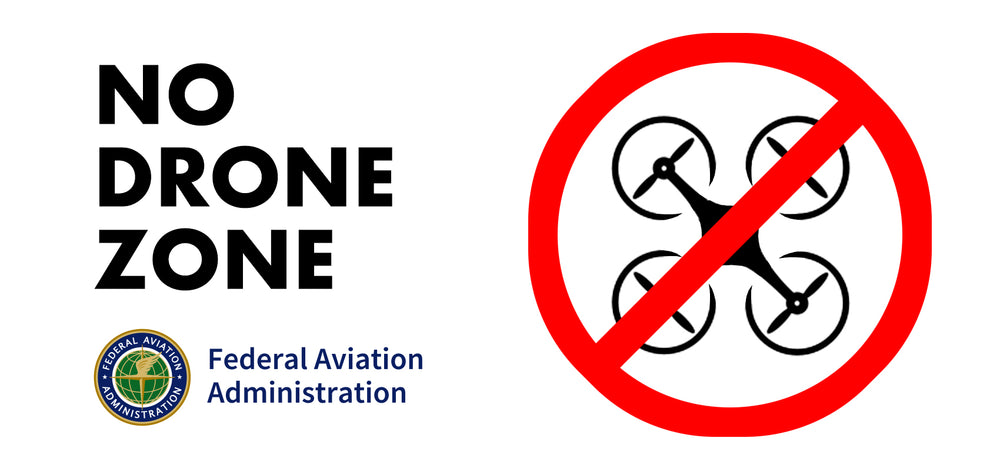
Commercial Use Restrictions
Having explored the safety implications of violating altitude restrictions, it’s crucial to understand the regulations governing commercial drone use. As drones continue to revolutionize fields such as photography, filming, and deliveries, regulatory bodies have implemented a range of restrictions to ensure safety and compliance. Let’s discuss the limitations specific to aerial photography and filming, as well as the regulations around delivery drones.
Limitations for Aerial Photography and Filming
While drones provide stunning perspectives for aerial photography and filming, several important limitations must be adhered to. These restrictions ensure that the use of drones does not interfere with privacy or safety.
- Altitude Regulations:
- Just like recreational use, commercial drone operators must adhere to altitude limits—typically around 400 feet AGL in the U.S. and 120 meters (394 feet) in Europe.
- These rules help prevent accidents with manned aircraft and keep the drone operations within safe parameters.
- Geofencing and No-Fly Zones:
- Many commercial drone operations are prohibited in or around certain areas, such as urban centers, near airports, or sensitive locations like government facilities.
- Geofencing technology helps enforce these boundaries, alerting drone operators when they approach restricted airspace.
- Privacy Concerns:
- Aerial photography near residential properties raises privacy issues. Operators should avoid capturing imagery that invades the privacy of individuals—legal actions can arise if someone feels their privacy has been breached.
- To mitigate concerns, it’s wise for operators to notify neighboring residents and seek permission before filming.
- Insurance and Liability:
- Many commercial operations require liability insurance to cover potential damage to people or property caused by drone activities.
- Ensure you have the appropriate coverage and are compliant with local regulations to protect yourself financially.
I recall a friend who operates a drone photography business. He shared a story about capturing breathtaking videos of a local event but was careful to inform attendees in advance. His conscientiousness about privacy made such a positive impact, helping to foster trust between him and the community.
- Permits and Filming Licenses:
- For large-scale productions or filming in national parks and protected areas, securing the proper permits is often mandatory.
- These permits can take time to process, so it’s essential to plan ahead.
Delivery Drone Regulations
The use of drones for delivery services represents a burgeoning field full of potential, but with great potential comes a set of strict regulations to adhere to.
- Certification and Licensing:
- Delivery drone operators must typically comply with rigorous guidelines and obtain specific certifications to ensure safety and reliability.
- Companies like Amazon and Google have gone through extensive regulatory processes to secure the necessary approvals for commercial drone delivery.
- Flight Path Restrictions:
- Delivery drones must follow designated flight paths to minimize interaction with other airspace users, especially in urban environments.
- Many countries require delivery drones to fly at certain heights and in specified corridors to avoid populated areas and ensure public safety.
- Weight Limits:
- Regulations often dictate strict weight limits for delivery drones. In the U.S., the FAA restricts drone deliveries to a maximum weight of 55 pounds (approximately 25 kilograms), including the payload.
- This limit ensures drones remain manageable in terms of flight control and reliability.
- Public Safety Considerations:
- Drones used for delivery must have mechanisms in place to ensure quick landings in the case of emergency, such as loss of signal or battery failure.
- Some companies are developing drones with parachute systems and other features designed to enhance safety during delivery operations.
- Public Impact Studies:
- Regulatory bodies often require companies to conduct studies on the potential public effects of drone deliveries before approval.
- This includes analyzing how they impact traffic, noise pollution, and community concerns.
Here’s a quick summary table comparing the limitations of aerial photography and delivery drone regulations:
| Aspect | Aerial Photography | Delivery Drones |
|---|---|---|
| Altitude Limit | 400 feet AGL (U.S.) / 120 meters (Europe) | 400 feet AGL (U.S.) / Restricted heights |
| Geofencing | Mandatory compliance with no-fly zones | Designated flight paths required |
| Privacy Concerns | High – must avoid private properties | Moderate – safety and security prioritized |
| Insurance | Liability insurance typically required | Liability insurance also necessary |
| Permits | Required for large-scale filming | Required for commercial operations |
In conclusion, understanding these commercial use restrictions is vital for anyone looking to profit from drone operations. Whether capturing stunning visuals or facilitating quick deliveries, adhering to the regulations protects both the operator and the community. Stay tuned as we shift our focus to recreational drone flying regulations in the following section!
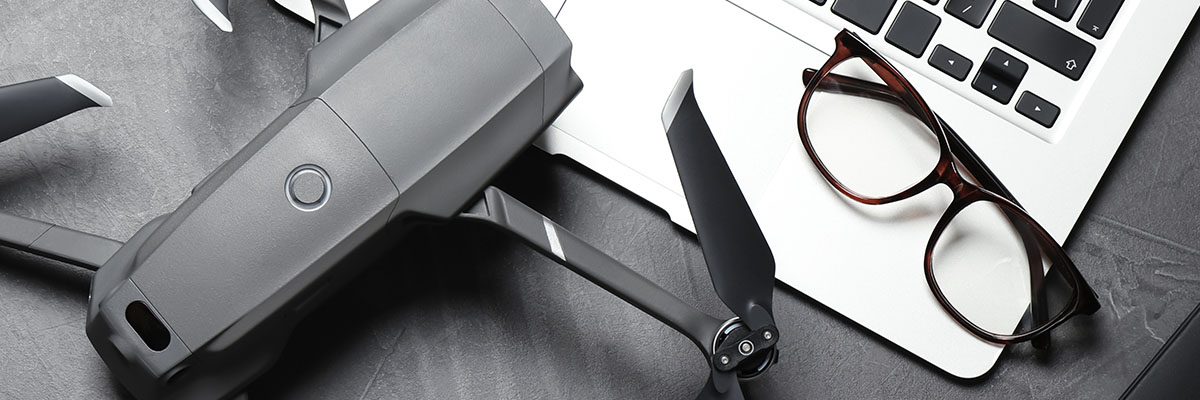
Recreational Drone Flying Regulations
After diving into the commercial use restrictions, it’s essential to explore the regulations that apply specifically to recreational drone flying. While flying for fun can be exhilarating, adhering to the rules is vital for ensuring safety and minimizing conflicts with others. Let’s take a closer look at restrictions in public spaces and altitude limits in national parks.
Restrictions in Public Spaces
Flying drones in public areas may seem straightforward, but there are several restrictions to consider. These rules are in place to protect both the drone operator and the general public.
- No-Fly Zones:
- Many cities and towns have designated no-fly zones, particularly around busy places like schools, hospitals, festivals, and events where large crowds gather.
- Be aware of local regulations before taking off. It’s recommended to check for any drone maps or apps that show real-time no-fly zones in your area.
- Public Safety Considerations:
- Operating in crowded areas increases the risk of accidents. Drones must be flown in a manner that avoids endangering people or property.
- For instance, flying over gatherings, festivals, or parades could lead to interference with individuals’ activities and result in safety hazards.
- Noise Pollution:
- Many public spaces have regulations regarding noise levels, especially in residential zones. Drones can produce noise that may annoy people nearby.
- Consider the time of day when flying your drone, as early mornings and late evenings might not be welcomed by those living nearby.
- Common Courtesy:
- Respect the privacy of others while flying. Avoid hovering over people’s residences or filming them without permission.
- Personal anecdotes like the time a friend decided to capture his neighborhood from above can highlight the importance of courtesy—while his intentions were good, he quickly learned that seeking permission from neighbors was key to avoiding misunderstandings.
- Establishing Boundaries:
- To maintain a positive relationship with the local community, it’s wise to establish clear boundaries during drone operations. This means being friendly, approachable, and open to concerns.
Here’s a handy checklist of public space restrictions when flying recreationally:
| Consideration | Guideline |
|---|---|
| No-Fly Zones | Avoid flying in designated no-fly areas |
| Crowds and Gatherings | Do not fly over large public gatherings |
| Noise Levels | Be mindful of noise pollution during appropriate hours |
| Privacy | Respect the privacy of individuals and property |
| Community Relations | Maintain open communication and courtesy |
Altitude Limits in National Parks
When it comes to flying drones in national parks, regulations become stricter to protect wildlife, natural landscapes, and the enjoyment of all visitors.
- Ban on Drone Flying:
- In many national parks across the United States and several other countries, flying drones is prohibited entirely. This ban aims to preserve the tranquility of the natural environment and protect vulnerable wildlife.
- Examples include iconic parks like Yellowstone or Yosemite, where drone activity is not allowed to avoid disturbing the ecosystems and park experience.
- Altitude Restrictions:
- In parks where drone flying is permitted, there are strict altitude limits (often around 100 feet AGL) to avoid disturbing wildlife and minimizing the disturbance from noise.
- For example, the National Park Service regulates that any drone operation must maintain a safe distance from wildlife and human activity, further ensuring the preservation of natural conditions.
- Permits for Specific Areas:
- Some parks may allow drone operation in specific areas with permits, which require detailed applications reviewing. Operators must demonstrate knowledge of safe practices and preparedness to mitigate risks.
- Respect for Nature:
- It’s essential to approach drone flying in national parks with respect. Many parks emphasize the importance of not impacting animal habitats or disrupting mating seasons.
- Following these guidelines demonstrates your commitment to protecting the environment while enjoying your flying hobby.
Here’s a summary of key considerations for flying drones in national parks:
| Aspect | Guideline |
|---|---|
| Flying Ban | Many parks prohibit drone flying |
| Altitude Limits | Often limited to 100 feet AGL or lower |
| Permit Requirements | Some areas may allow drones with special permits |
| Wildlife Protection | Respect ecosystems and avoid disturbing wildlife |
| Environmental Respect | Prioritize the preservation of natural settings |
In conclusion, understanding the regulations surrounding recreational drone flying is crucial for ensuring a safe and enjoyable experience. Whether you’re taking to the skies in a public space or considering a picturesque national park, following these rules helps protect the environment and fosters goodwill within the community. As we continue to explore drone regulations, we’ll next dive into the enforcement and penalties associated with violations. Stay tuned!
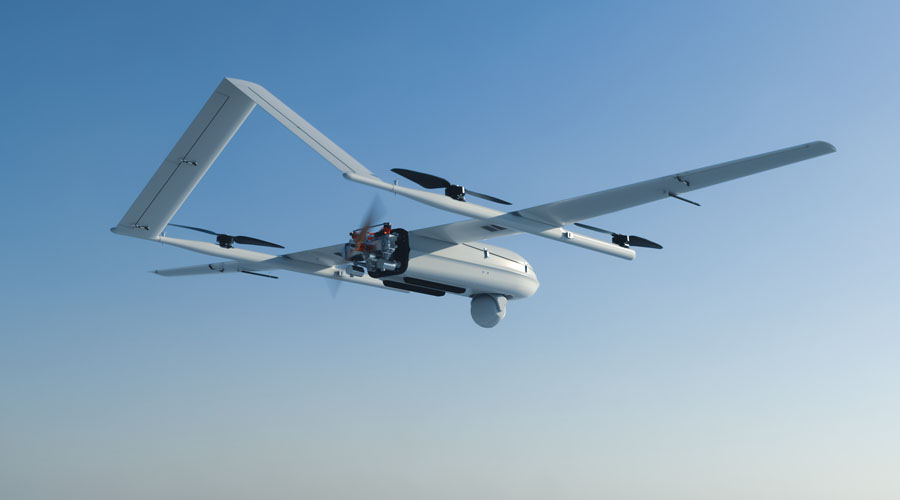
Enforcement and Penalties
Having explored the regulations related to recreational drone flying, it’s vital to address the enforcement mechanisms and potential penalties for violating these rules. Understanding the consequences of your actions helps ensure responsible flying and discourages misuse. Let’s delve into the repercussions of violating altitude restrictions and the legal aspects of drone misuse.
Consequences of Violating Altitude Restrictions
When drone pilots flout altitude restrictions, the penalties can vary widely, depending on the severity of the violation and the governing authority. Here are some common consequences to be aware of:
- Fines and Financial Penalties:
- One of the immediate repercussions for violating altitude limits can be a hefty fine. For instance, the FAA can impose fines ranging from a few hundred dollars up to $20,000 for significant violations.
- European regulatory bodies like EASA also follow suit, where fines may be imposed for non-compliance with established flight heights.
- Aircraft Seizure:
- In certain situations, authorities have the right to confiscate your drone if it’s flown recklessly or in restricted airspace. This can be a major setback—after all, your drone is not only a tool but often a considerable investment.
- I remember a fellow drone pilot who once shared his experience of having his drone impounded after flying over a concert without authorization. The loss of his equipment was a tough lesson learned!
- Warning Notices:
- Many local law enforcement and aviation authorities will issue warning notices for first-time violations. However, repeated offenses can escalate the situation quickly.
- Such notices typically serve as formal reminders of the responsibilities that come with operating a drone.
- License Suspension or Revocation:
- For commercial operators, frequent violations of altitude restrictions can lead to the suspension or even revocation of their Remote Pilot Certificate.
- This not only impacts the immediate ability to operate commercially but can also tarnish a pilot’s reputation in the industry.
- Civil Liability:
- In cases where a drone accident leads to injury or damages, the operator could face civil lawsuits. This situation can lead to financial penalties far exceeding administrative fines if found liable for negligence.
Here’s a quick summary table of possible consequences for altitude restriction violations:
| Consequence | Details |
|---|---|
| Fines | Can range from hundreds to thousands of dollars |
| Aircraft Seizure | Confiscation of drone for reckless operation |
| Warning Notices | Formal reminders for first-time offenders |
| License Suspension | Possible revocation of Remote Pilot Certificate |
| Civil Liability | Potential lawsuits in case of accidents or damages |
Legal Aspects of Drone Misuse
With the increase in drone popularity comes concerns regarding misuse. Understanding the legal implications of drone operation is essential for all operators, whether recreational or commercial.
- Criminal Charges:
- Engaging in reckless drone operation that endangers lives, such as flying near airports or over populated areas, can lead to criminal charges. This could result in jail time and a criminal record—serious consequences that extend beyond monetary fines.
- Real-life examples include drone operators who have faced jail time for deliberately flying drones into restricted airspace during high-profile events.
- Privacy Violations:
- Using drones to capture images or video of individuals without consent can lead to civil lawsuits based on privacy violations. Many states have laws protecting privacy that can lead to penalties for invasive behavior.
- An incident involving a drone operator who filmed neighbors without permission led to legal action and increased awareness of privacy rights within communities.
- Regulatory Framework:
- Compliance with both federal and local drone regulations is essential. A drone operator is expected to have adequate knowledge of laws set forth by the FAA (U.S.) or EASA (Europe), along with any additional local ordinances that may be in place.
- Ignorance of the law is not generally accepted as a valid defense, highlighting the necessity of being well-informed.
- Insurance Complications:
- Operating outside legal limitations can lead to issues with drone insurance. For instance, if a claim arises from an accident under illegal operation circumstances, insurance providers may deny coverage.
- It’s crucial to keep your insurance updated and ensure that you’re following all regulations to protect yourself from financial liability.
By understanding these enforcement mechanisms and legal aspects, you’ll be better equipped to navigate the complexities of drone operation. It’s ultimately about fostering a culture of responsibility and respect in the drone flying community. As we wrap up this discussion on regulatory compliance, let’s shift gears and explore the technological solutions that can help ensure compliance in the next section!
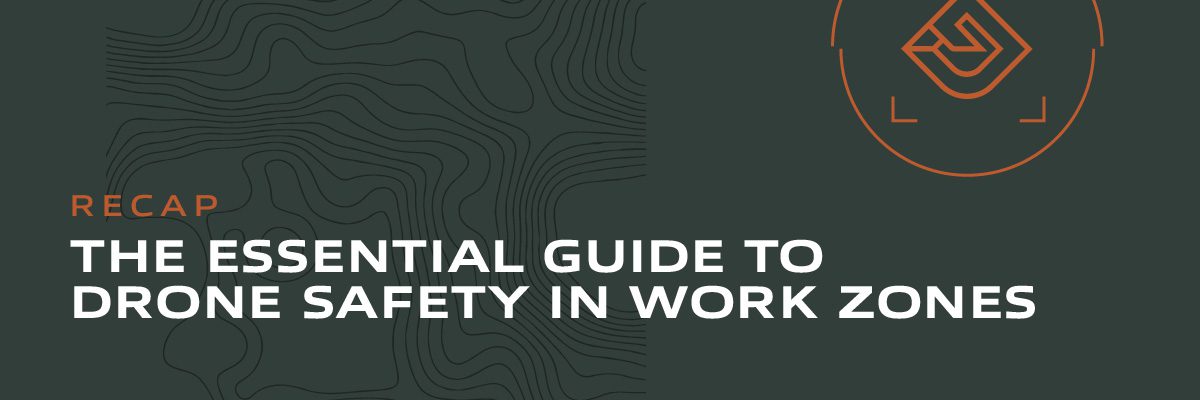
Technological Solutions for Compliance
As we move further into the era of drone technology, the need for compliance with regulations becomes increasingly crucial. Fortunately, advancements in drone technology have led to innovative solutions that help operators stay within legal parameters and fly responsibly. Let’s explore two key technological features—geofencing and altitude locking mechanisms—that enhance compliance and safety in drone operations.
Geofencing Features in Drones
Geofencing is a game-changer for drone operators aiming to comply with airspace regulations. This technology allows drones to define virtual boundaries based on GPS coordinates, and it helps prevent flights in restricted areas. Here’s how geofencing is shaping responsible drone flying:
- Automatic Restrictions:
- When a drone equipped with geofencing approaches a no-fly zone, it can automatically restrict flight capabilities, such as preventing takeoff or landing within that area.
- For instance, if you try to fly near an airport or a national park, the software immediately stops the drone from entering that airspace.
- Real-Time Updates:
- Geofencing databases are regularly updated with information from aviation authorities. This means drone operators benefit from the latest data regarding no-fly zones, controlled airspace, and temporary restrictions.
- I recall flying in a new area and being cautioned by my drone’s geofencing system about nearby airports—a handy reminder that enhanced my situational awareness.
- Customization Opportunities:
- Some drone applications allow operators to set their own geofences based on personal flying habits. If your favorite flying spot becomes restricted, you can adapt your settings and find new areas to enjoy.
- This feature not only encourages compliance but also promotes responsible flying habits.
- User-Friendly Interfaces:
- Most modern drones come equipped with user-friendly mobile applications that clearly display geofenced areas, allowing operators to plan their flights seamlessly. This visual assistance simplifies navigation and decision-making for ensuring compliance.
To summarize, geofencing technology serves as a robust safety net for drone pilots, helping to prevent unintentional breaches into restricted airspace. Consider it the digital guardian of your drone—always looking out for where you shouldn’t be flying!
Altitude Locking Mechanisms
Another innovative solution contributing to safe and compliant drone operations is altitude locking mechanisms. These features ensure that drones operate within allowable altitude limits, effectively preventing altitude violations. Here’s how altitude locking benefits drone operators:
- Automatic Altitude Control:
- Altitude locking helps maintain the drone’s flight within specified height limits automatically. If the operator attempts to ascend beyond the allowed altitude, the drone will either halt its climb or descend back to the legal height.
- This feature is essential, particularly for commercial operators, as it guarantees adherence to height restrictions without constant vigilance.
- Enhanced Safety:
- Altitude locks reduce the risk of collisions with manned aircraft, which typically operate at higher altitudes. By keeping the drone at or below designated heights, operators enhance overall air safety.
- A fellow flyer I spoke to once shared how an altitude lock saved him from inadvertently climbing above 400 feet when he became distracted. This kind of feature provides peace of mind, knowing safety is prioritized.
- Customizable Altitude Settings:
- Many advanced drones allow operators to set their own altitude limits, which can be particularly useful in various flying scenarios. For example, while flying near sensitive wildlife areas or crowded events, you can tailor the altitude settings accordingly.
- This customization empowers operators to take proactive roles in ensuring compliant flying.
- User Alerts and Warnings:
- When approaching altitude limits, some drones will issue visual or audible alerts to warn operators. This feature not only reinforces compliance but also enhances overall situational awareness during flights.
- These warnings can be crucial during dynamic operations, where conditions may change rapidly.
To illustrate the effectiveness of altitude locking, consider this: a recent study showed that operators using drones with altitude locking mechanisms experienced significantly fewer altitude violations compared to those without such features. Here’s a quick comparison summary of the benefits offered by geofencing and altitude locking mechanisms:
| Feature | Geofencing | Altitude Locking |
|---|---|---|
| Automatic Restrictions | Prevents entry into no-fly zones | Halts ascent beyond legal height |
| Real-Time Updates | Provides updated data on restricted airspace | Alerts operators when approaching altitude limits |
| Customization | Allows setting personal geofenced areas | Supports customizable altitude settings |
| Safety Enhancements | Reduces risk of restricted airspace violations | Minimizes collision risks with manned aircraft |
In conclusion, incorporating these technological solutions can significantly enhance compliance and safety in drone operations. With geofencing and altitude locking mechanisms, operators can navigate the skies more responsibly, ensuring that they adhere to regulations while enjoying their flying experience. As we move forward in the world of drone technology, staying informed about these tools can set you apart as a conscientious pilot. Finally, let’s wrap up our discussion on educational resources available for drone operators to further ensure safe practices!
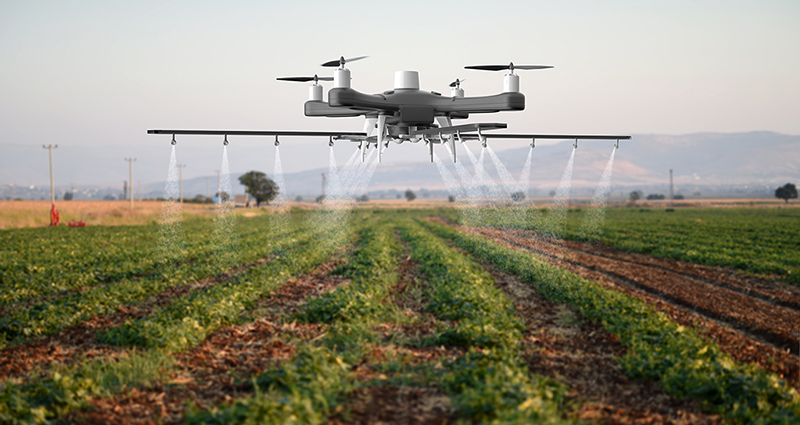
Educational Resources for Drone Operators
As we wrap up our exploration of technological solutions that promote compliance, it’s essential to discuss the educational resources available for drone operators. Staying informed and continuously improving your flying skills is vital for maintaining safety and realizing the full potential of your drone. Let’s dive into the training programs available for safe flying practices and the online platforms where you can get valuable regulatory updates.
Training Programs on Safe Flying Practices
Participating in training programs is a great way to enhance your skills and knowledge as a drone operator. These programs offer structured instruction that covers a wide range of topics related to safe flying practices.
- Certification Courses:
- If you’re a commercial pilot or planning to operate drones for business, obtaining a Remote Pilot Certificate from the FAA is crucial. Various training programs are available that prepare you for the FAA’s Part 107 exam.
- Schools, universities, and online platforms often provide these certification courses, ensuring you know the rules of the air as well as the mechanics of drone operations.
- Hands-On Flight Training:
- In-person training sessions allow aspiring pilots to get hands-on experience flying drones under the guidance of experienced instructors. These sessions often include practicing maneuvers, understanding drone controls, and learning how to handle emergency situations.
- When I first started flying my drone, I enrolled in a local workshop where a seasoned pilot helped simplify complex maneuvers. That practical knowledge significantly boosted my confidence.
- Safety and Risk Management:
- Many training programs emphasize risk management strategies. Understanding how to assess and mitigate potential hazards can make a significant difference in safe flying.
- Topics covered may include pre-flight inspections, weather considerations, and creating emergency action plans.
- Online Courses and Webinars:
- Several reputable organizations offer online courses and webinars on safe flying practices. These resources provide the flexibility to learn at your own pace while covering essential information.
- Notable platforms like UAV Coach and DroneU regularly host courses that focus on aerial photography, commercial operations, and regulatory knowledge.
- Practical Tip:
- A fantastic way to enhance your learning experience is to join a local drone club. Engaging with fellow enthusiasts allows for shared experiences, tips, and tricks that can elevate your flying skills. Plus, it’s a great opportunity to network!
Here’s a handy checklist to keep in mind when considering a training program:
| Consideration | Guideline |
|---|---|
| Certification Programs | Look for FAA-accredited courses for commercial pilots |
| Hands-On Training | Seek programs offering flight practice under supervision |
| Safety Emphasis | Ensure curriculum includes risk management and emergency planning |
| Online Flexibility | Explore reputable online courses and webinars |
| Community Engagement | Join local clubs for networking and shared experiences |
Online Platforms for Regulatory Updates
In addition to training programs, staying updated with regulatory developments is crucial for every drone operator. Several online platforms provide the latest news, changes, and guidelines related to drone regulations.
- Official Regulatory Websites:
- Regularly check the FAA’s official site and EASA’s website for the latest updates concerning rules, regulations, and drone operations. These sites also offer official resources such as manuals, FAQs, and helpful databases.
- Subscribing to email newsletters from these agencies can ensure you receive alerts on new regulations or changes as they happen.
- Drone Industry News Outlets:
- Several publications like “DroneDJ” and “sUAS News” focus on drone industry developments, including regulatory updates, new technologies, and best practices.
- These resources often feature expert opinions, articles from seasoned drone pilots, and input from regulatory officials.
- Social Media Groups and Forums:
- Joining drone-focused groups on platforms like Facebook, Reddit, and specialized forums allows you to engage with knowledgeable operators and stay informed about changing regulations.
- These communities often share experiences, tips, and the latest updates, making them an excellent resource for real-time information.
- Mobile Applications:
- There are several mobile apps designed specifically for drone operators that keep you updated on no-fly zones, reporting requirements, and weather conditions.
- Popular apps like “Airmap” and “Litchi” provide valuable information and can alert you to changes that may affect your flight plans.
- Personal Connections:
- Networking with fellow drone operators and industry professionals can also yield regulatory updates. Attending industry events, shows, or workshops creates opportunities for you to hear first-hand about changes and insights from experts.
Consider this table summarizing the types of online platforms for keeping up with drone regulations:
| Platform Type | Example Resources |
|---|---|
| Official Regulatory Websites | FAA, EASA |
| Industry News Outlets | DroneDJ, sUAS News |
| Social Media Groups | Facebook Groups, Reddit forums |
| Mobile Applications | Airmap, Litchi |
| Networking Opportunities | Industry events, workshops, local meetups |
In summary, engaging in training programs and utilizing online platforms for regulatory updates equips drone operators with essential knowledge and skills. By continuously learning and staying informed, you contribute to a safer flying community while maximizing your drone’s potential. Whether you’re just starting on your drone journey or looking to enhance your existing knowledge, these resources can help you soar to new heights!


